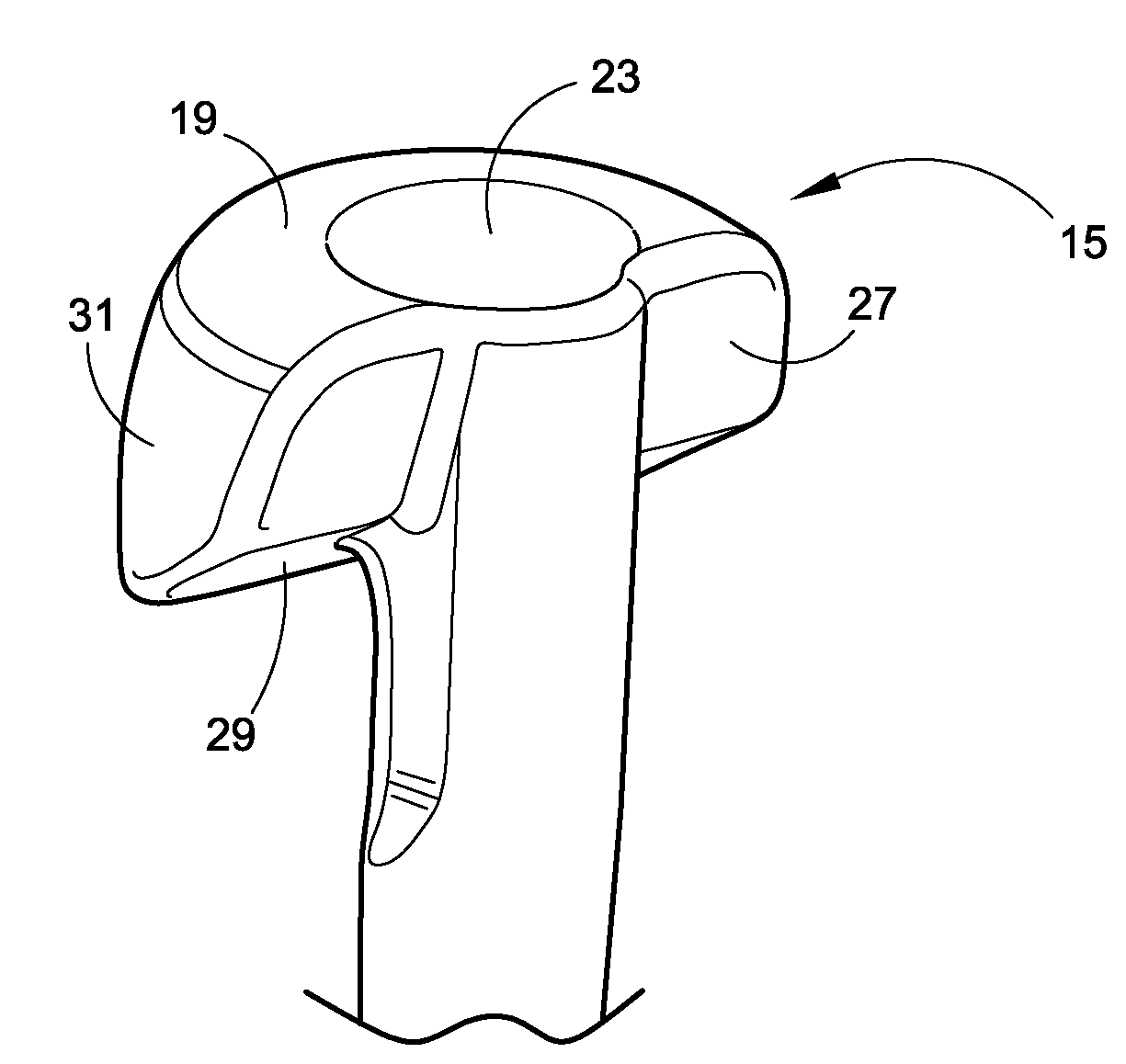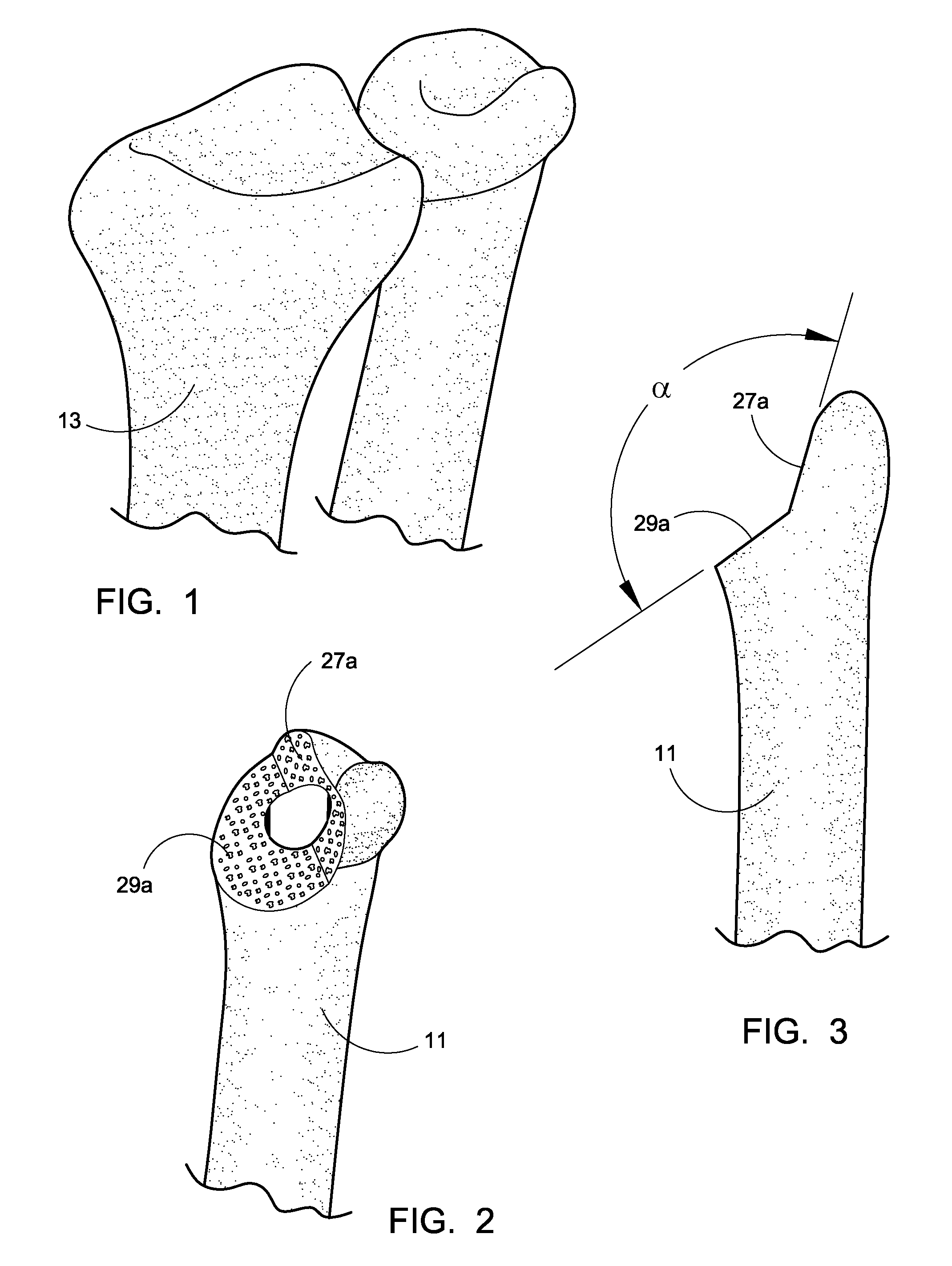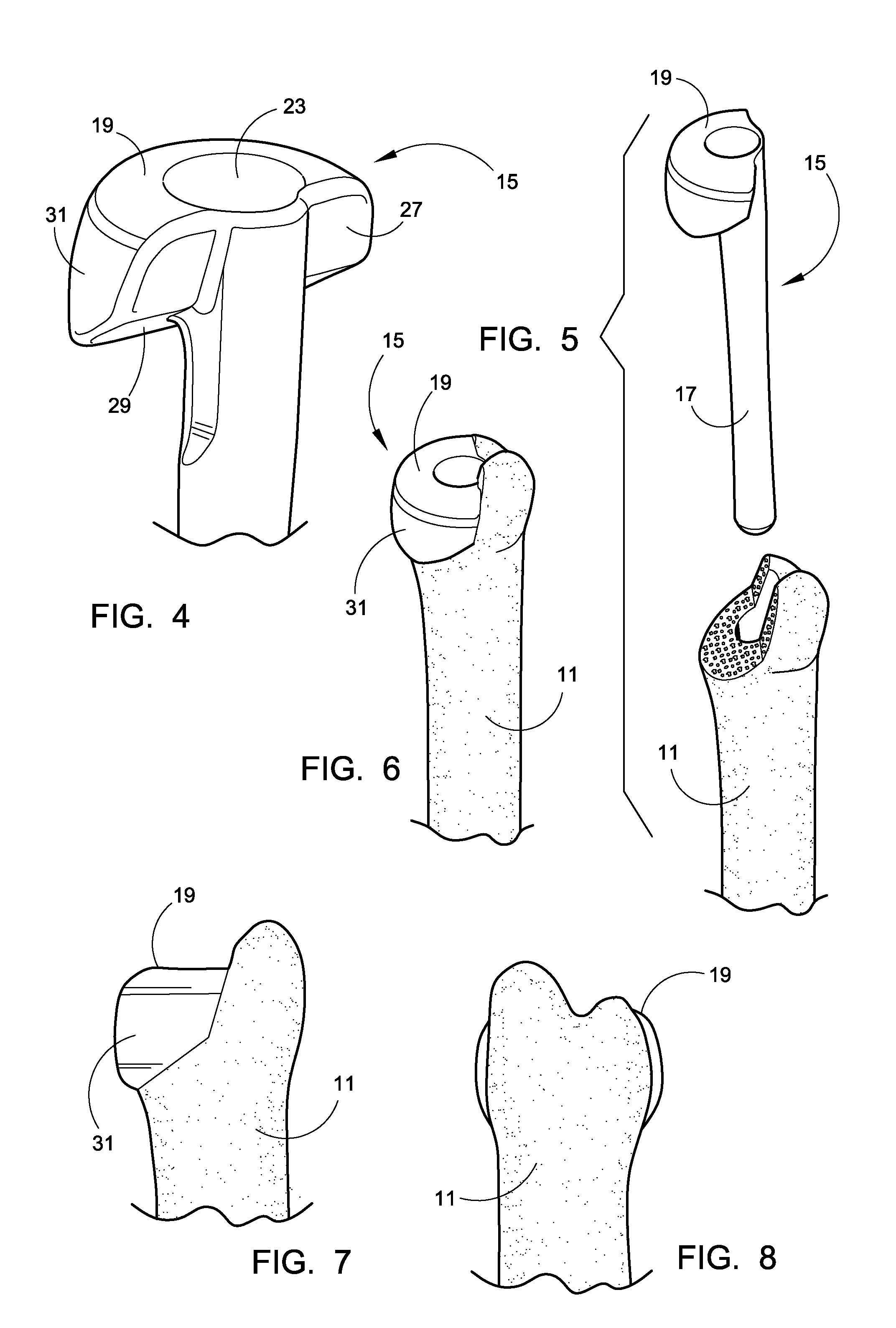Distal radioulnar joint prosthesis
a radioulnar joint and prosthesis technology, applied in the field of joint prosthesis, can solve the problems of wrist instability, wrist pain, and varying degrees of bone destruction, and achieve the effects of improving the stability of the wrist, reducing the risk of fracture, and improving the quality of li
- Summary
- Abstract
- Description
- Claims
- Application Information
AI Technical Summary
Benefits of technology
Problems solved by technology
Method used
Image
Examples
Embodiment Construction
[0032] The invention provides a prosthesis which can be implanted, for example, after a fracture, rheumatoid arthritis or other rheumatoid disease involving the distal radioulnar joint. The motion, which is supported by the use of the implant, is the turning (pronation / supination) of the forearm. The ulna 11 is the non-moving and weight-bearing fundament of the DRU joint (see FIG. 1), while the radius 13 is a mobile component with mostly compressing forces influencing the positioning during the turning movement. The radius 13 turns around the ulnar head. In addition to the distal joint surfaces between the radius and ulna, a prerequisite for turning movement is the existence of joint surfaces proximally in the elbow, and the proximal radioulnar joint consists of the radial head and the ulna with a fossa radii and an annular ligament.
[0033] At the elbow, the ulna 11 makes a flexion or extension motion, whereas the radius 13 rotates around it own axis. Both the radius and the ulna ha...
PUM
 Login to View More
Login to View More Abstract
Description
Claims
Application Information
 Login to View More
Login to View More - R&D
- Intellectual Property
- Life Sciences
- Materials
- Tech Scout
- Unparalleled Data Quality
- Higher Quality Content
- 60% Fewer Hallucinations
Browse by: Latest US Patents, China's latest patents, Technical Efficacy Thesaurus, Application Domain, Technology Topic, Popular Technical Reports.
© 2025 PatSnap. All rights reserved.Legal|Privacy policy|Modern Slavery Act Transparency Statement|Sitemap|About US| Contact US: help@patsnap.com



